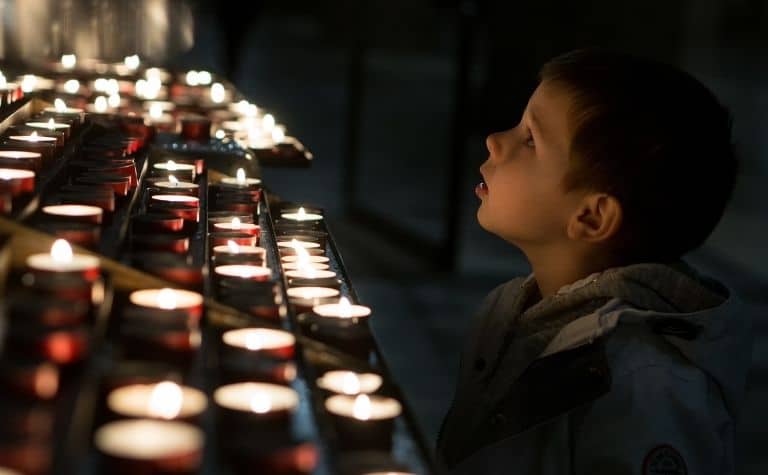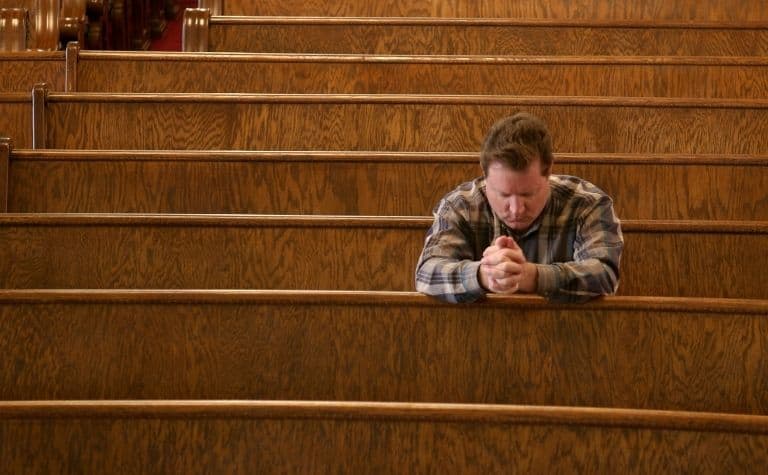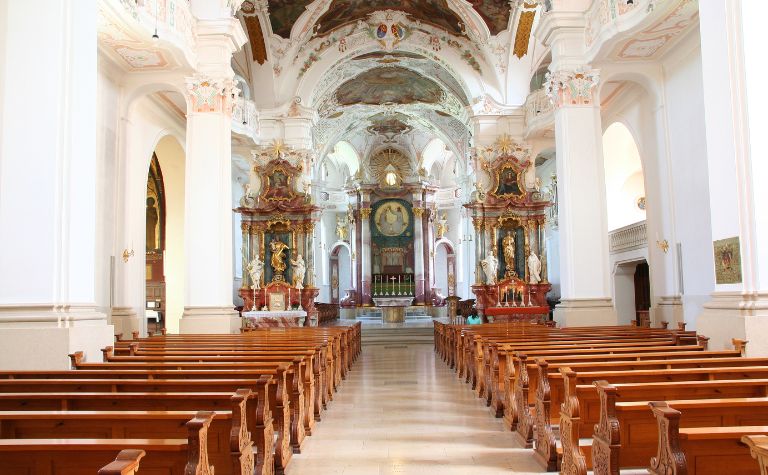The architecture and ambiance of Catholic Church buildings invite inner reflection, a quiet mind, and sincere prayer. Soaring ceilings, tall windows, warm colors, and calming textures make people feel welcome to enter, sit down, and rest. But is it ok enter a Catholic church even if a person isn’t Catholic?
Anyone can enter a Catholic Church to think or pray. People can also enter to rest their tired feet or quiet their minds. When the doors are open, people from all walks of life, including believers and non-believers, are free to come and go. However, it’s common for churches to lock their doors at night.
Are Catholic churches open to anyone? Are the church doors always open? Can anyone walk into a church and talk to a priest? What should a person do when they first enter a Catholic church? This article will explore the rules and guidelines around entering Catholic churches and discuss the general etiquette of entering them.
Also, see Why Do Some Protestants Convert to Catholicism? to learn more.

Are Catholic Church Doors Always Open?
Catholic church doors aren’t always open like they used to be due to concerns about theft, vandalism, and overall safety. For these reasons, most Catholic churches lock their doors at night.
Historically, even people with a criminal history feared stealing from God, but this isn’t often the case anymore. (Also see Cremation and Catholicism: What Are the Rules?)
Catholic churches with doors that are always open are now in the minority. There are still a few churches around the world where the open-door tradition is still active, but most church buildings are unlocked throughout the day and then locked at night.
Locking doors is done with sorrow. Catholic churches, who find it necessary to lock their doors at night, do so with regret. It’s sometimes difficult for non-Catholics to understand the importance of the traditional open-door policy.
No matter how humble the church building is, it represents the presence of God on Earth. Everyone with peaceful motives should be able to enter it.
The morality of open doors is important. According to Catholic ethics, churches shouldn’t turn away any true seeker or someone in need. The church isn’t an exclusive club set apart for socially elite members only.
The existence of the building is to encourage all people with good intentions to enter. The real estate belongs to the Catholic Church, but the building is for the use of people.
The need for safety is paramount. Even though open doors symbolically communicate an important theological message, churches are responsible for ensuring all visitors’ safety.
Not only have crimes against people occurred in churches with open-door policies, but theft and vandalism cost churches a lot of money, hurting their other ministries.
Also, see How Did the Catholic Church Get So Rich? to learn more.

Can Anyone Walk Into a Catholic Church and Talk To a Priest?
Anyone can walk into a Catholic church and talk to a priest. Priests have the desire and responsibility to serve people. They are often looking for ways to help those who enter their church.
However, they won’t be offended if a person thanks them and respectfully requests to be alone. The choice is up to the visitor.
The sanctuary is a sacred space. Most churches, including the Catholic Church, refer to the church building’s altar or main worship area as a sanctuary. [1] A sanctuary is a place of holiness and safety.
Can non-Catholics enter? Non-Catholics may enter a church just as devout Catholics can. Whether a person is Catholic, atheist, Baptist, Jew, or Muslim makes no difference.
If a person needs help, assistance, direction, or advice, the priest is prepared to offer that assistance. However, certain activities, such as the Eucharist, are for Catholics only.
What Are You Supposed To Do When You Enter a Catholic Church?
When a person enters a Catholic Church, it’s traditional to dab one’s self with holy water, make the sign of the cross, and kneel briefing in front of the altar. [2]
These are traditions of the faith that remind people of their baptism and are an expression of obedience to God. However, these actions aren’t mandatory.
Non-Catholics aren’t expected to practice these traditions. Other people may notice such inactivity, but non-Catholic visitors are common.
It’s not considered disrespectful to refrain from these practices. In fact, it would be considered disrespectful for a non-Catholic to engage in these activities without faith.
What is considered good etiquette? All people are welcome to enter the church and sit anywhere quietly. However, it’s important to make every effort not to disturb others in the church who are there for prayer, rest, and support. A quiet demeanor, and hushed voices, and a respectful attitude are necessary.
Visitors should turn off their cell phones. Churches expect visitors to show respect by turning off their cell phones. People should avoid talking on the phone and texting in the sanctuary. In addition to silent prayer and contemplation, reading the Bible and writing are acceptable practices.

Is Everyone Welcome In a Catholic Church?
Everyone is welcome in a Catholic Church. As the writer Brian Doyle pointed out in an article for US Catholic Magazine, the sanctuary for all is the point of being the Church. [3]
“A church ought to be a sanctuary. Otherwise, it’s just a corporation like any other. We do what we can. You’d be surprised how many people bring food over and leave it on the table there. The door’s always open. That’s sort of the point of a church, isn’t it? That the door’s always open?”
The example of Quasimodo: throughout history, troubled people have claimed sanctuary in churches. Claiming sanctuary is how Quasimodo saves Esmeralda in the famous story, The Hunchback of Notre Dame. Once inside the Church, according to law, people can claim sanctuary. [4]
A welcoming refuge: Catholicism’s history of being a refuge inspires confidence in many people that visitors are welcome in their churches, even if their intention isn’t to pray or talk to a priest. Catholic churches all around the world are peaceful environments where people can think and rest.
Conclusion
Anyone can go into a Catholic church to think or pray without commitment. The Church seeks to help visitors, and their doors are open to all.
References:
[1] Source
[2] Source
[3] Source
[4] Source
Related Questions
Catholic vs. Protestant vs. Orthodox: What's the Difference?
Roman Catholicism, Protestant Christianity, and the Eastern Orthodox Church are the three historical branches of the Christian religion. Each tradition traces its doctrines and practices to the New...
Roman Catholicism and Lutheranism, part of the Protestant tradition, are two of the most prominent branches of the Christian religion. Many people find it interesting to compare and contrast...
